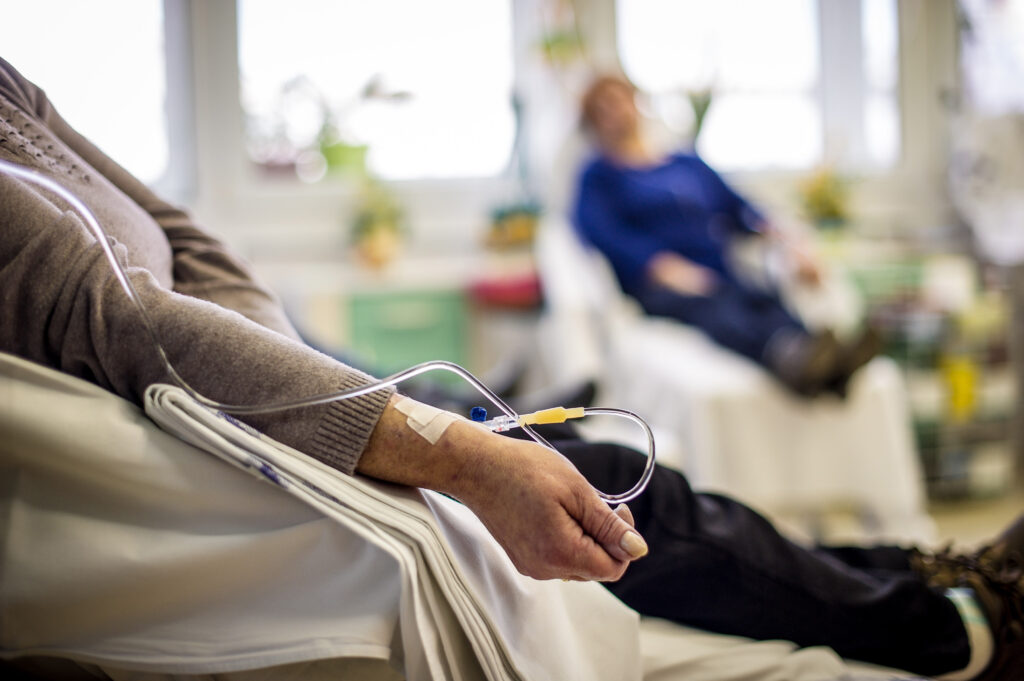A collaboration with students at the University of Strathclyde is giving young adult patients at The Prince & Princess of Wales Hospice the opportunity to explore a new virtual reality world.
Undergraduate students Fraser Graham BSc (Hons) Software Engineering and Gary Rea MEng Computer and Electronic Systems developed the apps in a project for their honours degree dissertations.
They take the young adult patients, suffering from Duchenne muscular dystrophy, into a patient bedroom in the new hospice, which opens in September, and create a whole new environment they wouldn’t otherwise get the chance to experience. It meant one patient, who has been in a wheelchair for nearly 20 years, could walk through a forest.
“I really enjoyed it,” said patient Paul McGinley “It was a great experience to walk through the forest – somewhere I wouldn’t be able to go in my wheelchair. And it was really interesting to see inside the bedroom in the new hospice and look around.” And Paul Quinn, who is 26 and has been in a wheelchair since he was 10, described the walk through the forest as “absolutely brilliant”.
Meeting the young people at the hospice was the most interesting part of the process, according to student Gary Rea. “I learned a lot about how people with Duchenne muscular dystrophy live and how they can interact with their environment, which was essential when developing a virtual reality environment,” he said.
“Many of the young men were gamers, which is something we have in common. Learning that a lot of them play the same games I do was interesting, and learning about the different controller preferences they had for gaming. Some had their own custom setups.
“Working with them was a pleasure. Their suggestions and feedback helped immensely in the development of the project.
“The current version of the application involves being able to visit a forest in virtual reality. Going forward there are many different options the application can take and more environments could be added, such as going to a beach or a castle.
“An important aspect to focus on the application in the future is usability. Ideally this application aims to be usable by young people with Duchenne muscular dystrophy who have unique needs for controlling the application, and a control scheme needs to be adopted to enable that.”
And Fraser added: “As a virtual reality hobbyist, the opportunity to design and develop something useful using this technology stood out to me.
“Developing with a newer technology such as virtual reality hardware is always interesting by nature. Understanding the nuances of virtual reality-human interaction with limited research on this topic led to new-found knowledge I can use in future projects.
“I’m very thankful to the patients, their families and the staff at The Prince & Princess of Wales Hospice for all of their help during the project.
“The software produced as a result of this project was proof of a concept demonstrating that virtual reality technology can be a powerful tool within healthcare.
“As the basis of the software is a video game-like virtual reality environment, there is a huge amount of scope for expansion: different input mechanics, larger game area and possibly integrations with the likes of video and music streaming services to be available within the virtual reality environment.”
Researchers on the project are aiming to secure further funding to enable expansion of the project.
Fiona Wylie, The Prince & Princess of Wales Hospice’s senior nurse for strategy implementation, explained that the young adult patients have been involved in the development, design, running and evaluation of a social group at the hospice to build resilience, self-esteem and confidence. The virtual reality project has been a part of the group’s activities.
“The workshops encouraged discussion, feedback and demonstrations of the designed work. We will continue to explore further technology work with the young adults and the University of Strathclyde,” she said.
Work started in September 2016 to build a new home for The Prince & Princess of Wales Hospice in Glasgow’s Bellahouston Park.
The new facility set in a 7.5-acre site in Bellahouston Park will lead the way in palliative care, offering a gold standard of care and support to 1200 new patients and families every year in a purpose-built facility.
The hospice is one of the first in the country to transition young adult patients from children’s to adult hospice services. The revolutionary patient care in the new hospice offers adaptable private, social and family spaces specifically designed to boost wellbeing and create a sense of calm.
